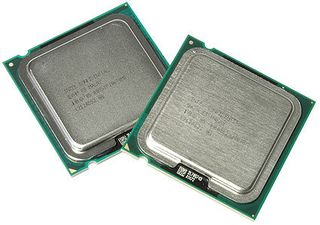Tom's Hardware's 2007 CPU Charts
FSB1333 Intel Processors & New 2007 CPU Charts

Today is a good day for a close look at the processor market, as Intel officially introduces new Core 2 processors that utilize faster FSB1333 system speeds. The new platform, called the 3 series (aka Bearlake chipset), was introduced during Computex in Taiwan. Now that the motherboard vendors are ready with P35 and G33 model lineups, Intel is starting to ship the appropriate processors. The increased system speed alone hardly makes a performance difference, but the battle for the CPU market has shifted its focus to cost and energy efficiency. In this article we discuss recent happenings and introduce our brand new 2007 CPU Charts, which are now based on Windows Vista.
Although dual core processors and DDR2 memory have been around for approximately two years, these technologies will remain the mainstream for another year. Intel is close to introducing its next-generation Core 2 processors using the 45 nm CMOS process later this year, but the infrastructure based on Socket LGA775 will only receive cosmetic changes until a whole new generation and new socket take over in 2008. The same applies to AMD, which won't introduce its new processor socket before the middle of 2008, staying with the accelerated Socket AM2+ with faster interface speeds for the time being.
While Intel is shrinking and thus basically face-lifting its successful Core 2 family, AMD is working on a more substantial strike. New quad core and dual core processors called Phenom X4 (code-named Barcelona) and Phenom X2 are on the way, to fight back against the current Core 2 dominance. Unfortunately, AMD is under extreme time pressure: every day that it lacks a competitive product, it loses money and market share to Intel. Once again, AMD won't introduce desktop processors right from the beginning, rather focusing first on Opteron branded server chips. For this reason, many people assume that AMD might miss the holiday shopping season, which could have made up for the months-long bleeding.
Recent price drops have stirred up the processor market quite a bit. On the one hand this is good, as it means that users get much more performance for the buck when compared to half a year ago. You can easily get a dual core processor for less than $100 today, or entry-level CPUs for as little as $35. On the other hand, it has made it impossible for non-enthusiasts to classify processors: performance differences and price differences, combined with the numerous price drops, often leave a distorted picture of the marketplace. We will discuss the most important technical characteristics of AMD and Intel processors, go over recommended platforms, and then jump into the most comprehensive CPU comparison project on the Internet: the Tom's Hardware CPU Charts.
Join our discussion on this topic
Stay on the Cutting Edge
Join the experts who read Tom's Hardware for the inside track on enthusiast PC tech news — and have for over 25 years. We'll send breaking news and in-depth reviews of CPUs, GPUs, AI, maker hardware and more straight to your inbox.
Current page: FSB1333 Intel Processors & New 2007 CPU Charts
Next Page Status QuoMost Popular

